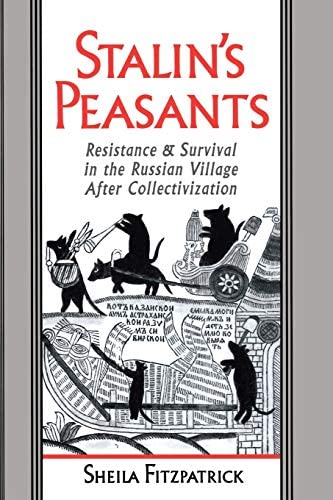Sheila Fitzpatrick. Stalin’s Peasants. Resistance and Survival in the Russian Village After Collectivization.
Oxford/Nueva York: Oxford University Press, 1994.
420 páginas.
Contents
Chronology
Introduction
Resistance Strategies
The Potemkin Village
Scope of This Study
1 – The Village of the 1920s
The Setting
The Kulak Question
Conflict Over Religion
On the Eve
Rumors of Apocalypse
2 – Collectivization
Bacchanalia
Struggle
Famine
Repression
3 – Exodus
Modes of Departure
Regulating Departure
Under the Passport Regime
4 – The Collectivized Village
Land
Membership
A Congress and a Charter
5 – A Second Serfdom?
Collective and Private Spheres
Tractors and Horses
Work and Pay
Peasant Grievances
6 – On the Margins
Independents
Craftsmen
Khutor Dwellers
Otkhodniks and Other Wage Earners
7 – Power
Rural Officials
Men, Women, and Office
Leadership Style
Kolkhoz Chairmen
Impact of the Great Purges
8 – Culture
Religion
Everyday Life
Broken Families
Education
9 – Malice
Crime and Violence
Shadow of the Kulak
Village Feuds
Denunciation
10 – The Potemkin Village
Potemkinism
New Soviet Culture
Celebrity
Elections
11 – The Mice and the Cat
Stalin in the Conversation of Rumors
How the Mice Buried the Cat
Afterword
On Bibliography and Sources
